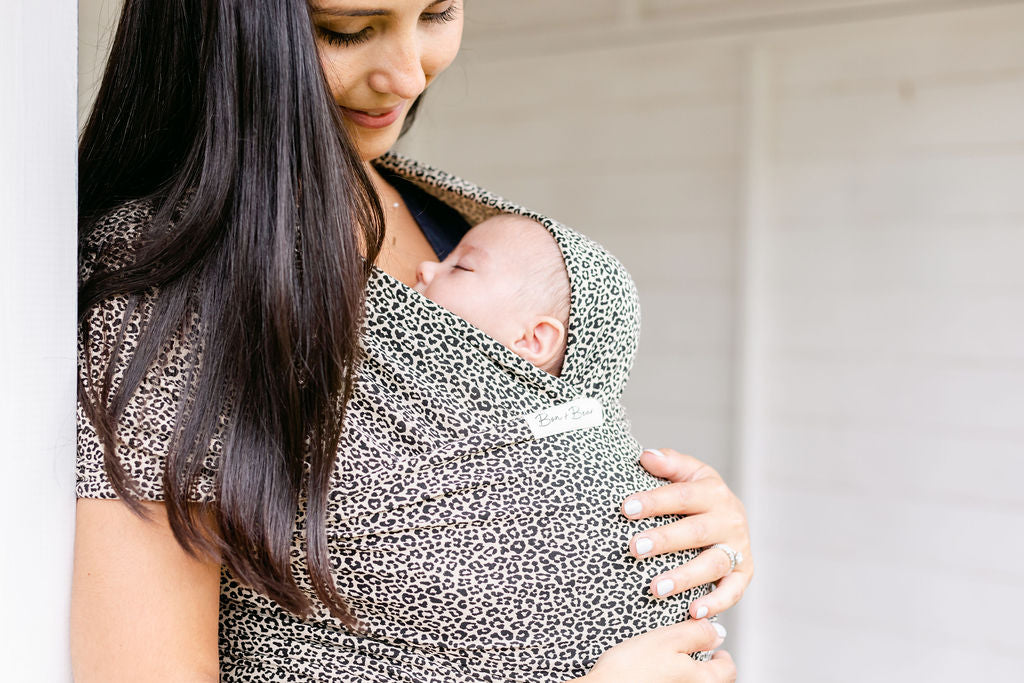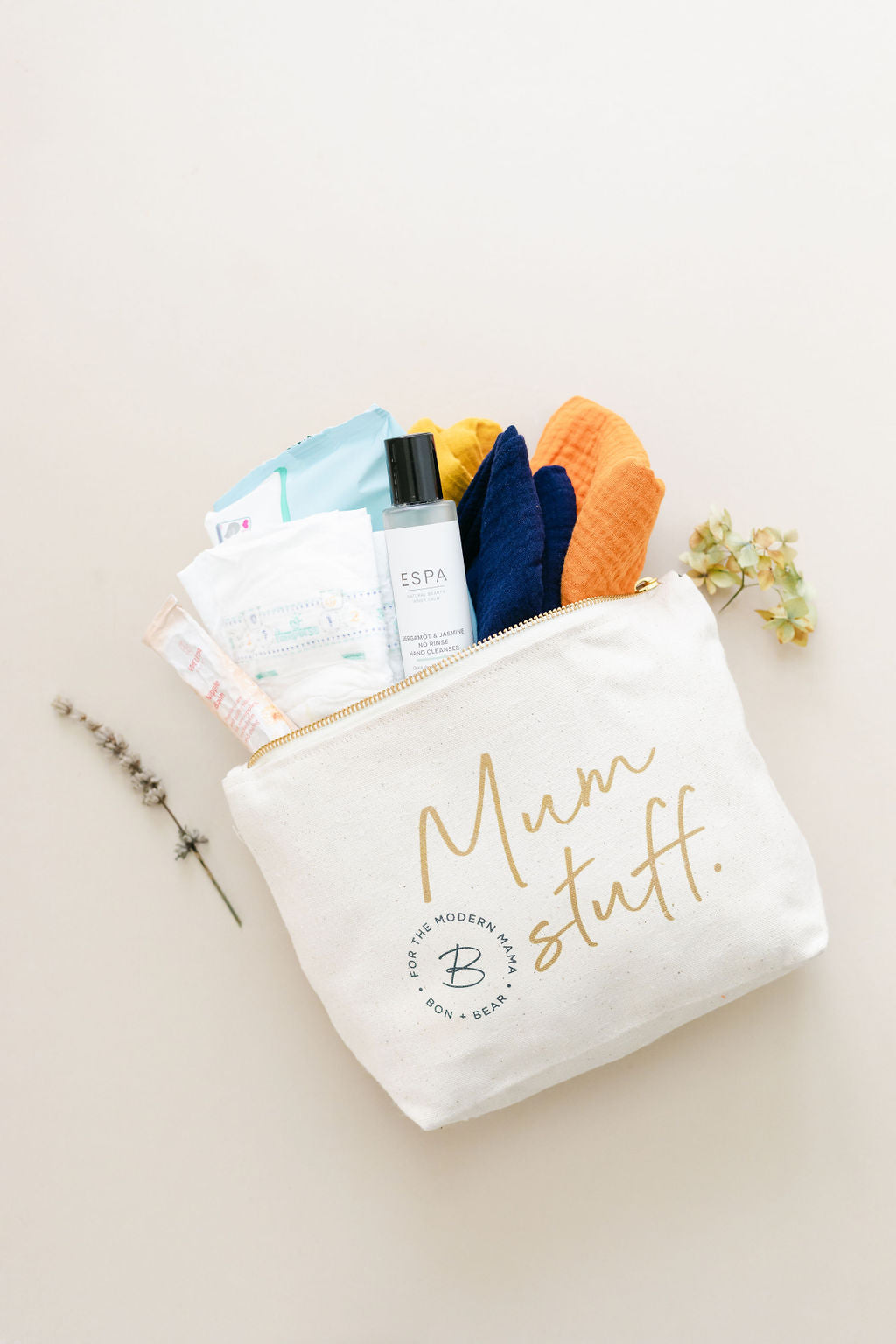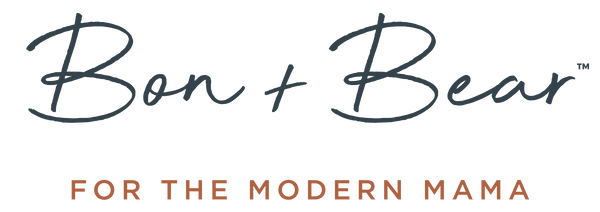
4 Key Benefits Of Babywearing
Babywearing has been used for centuries in many cultures, originating in Africa. It was a way to keep baby close in the ‘fourth trimester’, to responsively feed, soothe and ensure a supportive start to baby’s and mum’s life together.
Prams and strollers weren’t the norm in these countries - or in the UK - up until the 1950s when mass production began and babywearing slowly disappeared or became known as the ‘hippy’ thing to do.
Here at Bon + Bear we are on a mission to spread far and wide the amazing benefits of babywearing/skin-to-skin and why it’s so beneficial in the first few months of motherhood and beyond.[1] But also to prove that you can babywear AND look cool. When you think about… it just makes sense!
See below our top benefits of babywearing and how to keep safe whilst baby carrying in your stretchy sling/wrap.

1. Helps reduce crying by 43%
A gentle transition from womb to world which helps them feel safe and secure. Imagine being warm, constantly fed and with white noise on loop for 9 whole months and then suddenly not having any of that. It’s no wonder the next best thing is skin-to-skin or babywearing helps them settle. That’s why it has been shown to help reduce crying and fussiness by 43%! (Hunziker UA, Barr RG, 1986) [2] when you carry baby in a sling for 3 hours a day.
- Babywearing shows a greater maternal responsiveness and more secure attachment between baby and mum(Anisfeld, 1990) [3].
2. Helps reduce postpartum depression & in turn can boost milk supply
It can ease Mama’s anxiety around the expectation that baby should sleep, or the need to always be on the go for yourself, whether you set aside dedicated skin to skin time where you will rest by reading, mindless scrolling and binge watching Netflix. Or babywearing so that you if you must you can cook, clean or run around after your toddler – the worry of doing it all suddenly becomes less of a burden and you can focus on your wellbeing which will help to reduce postpartum depression [4] by boosting your oxytocin the ‘love hormone’ and it stimulates prolactin which can help to boost milk supply.
- A minimum of 5 Hours of skin to skin per day in the first week and 2 hours + a day until 1 month
- This showed a lower depression scale when reviewed and at 3 months a bigger reduction in cortisol (stress hormone) than those who did not do any skin to skin or very little (Bigelow, 2012) [4]
3. Helps Mums breastfeed for longer
When baby is close to you for skin to skin or babywearing, they are content and relaxed for longer, so when they are ready to feed (which will be very frequently in the first 8 weeks!) you are able to instantly recognise their feeding cues which can be very small initially such as rooting or little squirms. However, If baby was in a pram you may not recognise these as quickly to respond before their cues progress and become more hungry, which is why the duration of breastfeeding is typically twice as long [5] The duration of breastfeeding at 5 months was shown to be 48% of women vs 24% with those who carried baby daily (Pisacane, 1992).
- Carrying baby at least 1 hour a day allows you to recognise your baby’s feeding cues and easily respond to them, quickly.
4. Calms baby reflux and colic
Do you remember what it feels like to have a big Christmas dinner, with all the trimmings and pudding? And then you lie down, feel bloated, sick and then profess “I don’t want to eat again”. Imagine that for a baby after a full feed - especially when their stomachs and oesophagus isn’t fully developed yet – they might then be prone to silent reflux (like acid sitting in your chest) or reflux and physically being sick. This is distressing for you and them and in more severe cases can cause slow weight gain. So it makes sense to keep baby upright after a feed for at least 30 minutes,[7] so they can digest their milk and limiting reflux so they are more comfortable.
- Symptoms of colic are associated with the 3’s — more than 3 hours of crying, more than 3 times a week and for the first 3 months plus. Babywearing can keep baby calm and reduce crying to limit the symptoms of colic. [6]

How to use a baby wrap safely:
Always follow the TICKS method for safe babywearing and refer to your instructions with your carrier to get a snug fit every time. For more information visit our Safe + Sound page:
TIGHT
IN VIEW AT ALL TIMES
CLOSE ENOUGH TO KISS
KEEP CHIN OFF THE CHEST
SUPPORTED BACK
T - T is for tight.
Your sling or carrier should be tight enough to hug your baby close to you as this will be most comfortable for you both. Any slack/loose fabric will allow your baby to slump down in the carrier which can hinder their breathing and pull on your back.
I - I is for in view.
You should always be able to see your baby’s face by simply glancing down. The fabric of a sling or carrier should not close around them so you have to open it to check on them. In a cradle position your baby should face upwards not be turned in towards your body.
C - Close enough for a kiss.
Your baby’s head should be as close to your chin as is comfortable. By tipping your head forward you should be able to kiss your baby on the head or forehead.
K - Keep chin off chest.
A baby should never be curled so their chin is forced onto their chest as this can restrict their breathing. Ensure there is always a space of at least a finger width under your baby’s chin.
S - Support their back.
In an upright carry a baby should be held comfortably close to the wearer so their back is supported in its natural position and their tummy and chest are against you.
If a sling is too loose they can slump which can partially close their airway. (This can be tested by placing a hand on your baby’s back and pressing gently — they should not uncurl or move closer to you.)
A baby in a cradle carry in a pouch or ring sling should be positioned carefully with their bottom in the deepest part so the sling does not fold them in half pressing their chin to their chest.

